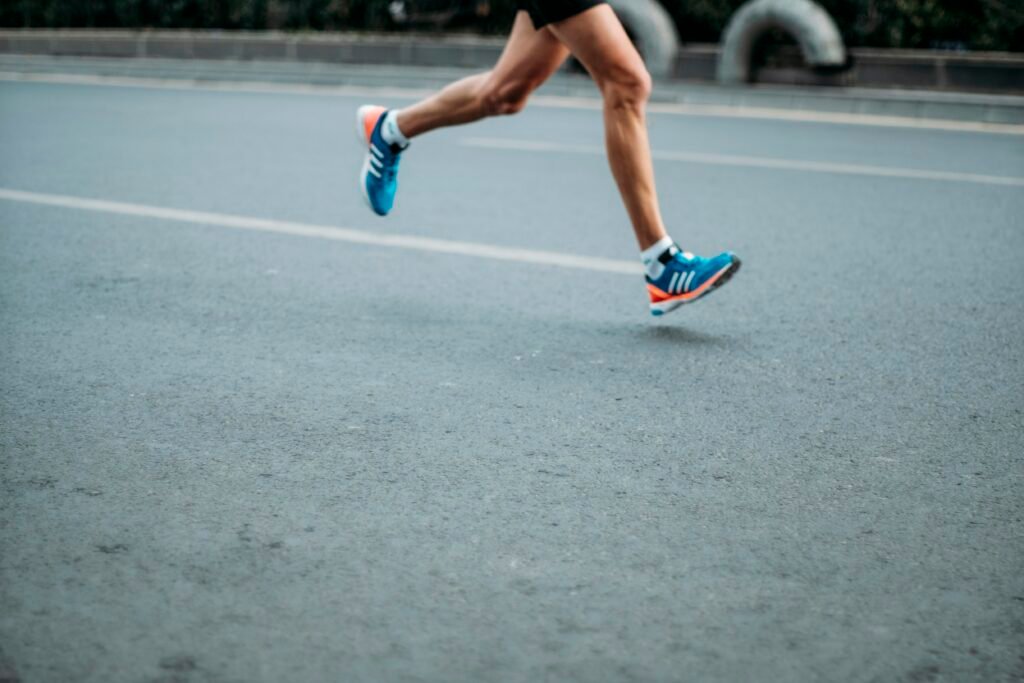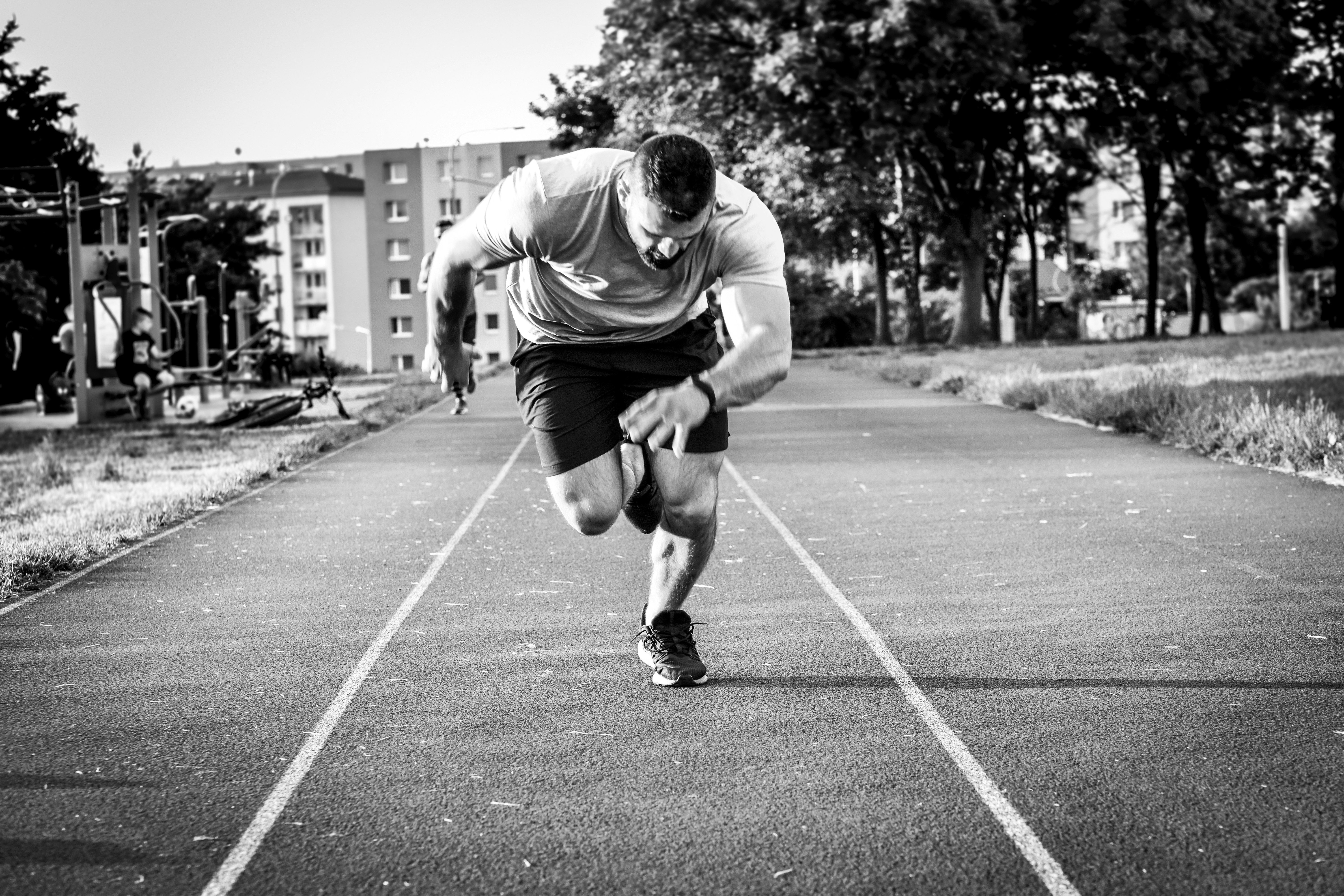
Running is not just a simple exercise; it’s a powerful tool for improving overall health and shedding unwanted stomach fat. Engaging in regular running routines can lead to significant fat loss, particularly around the abdominal area. When you run, your body burns calories, and this elevated calorie expenditure can help reduce belly fat, which is often linked to various health risks like heart disease and type 2 diabetes.
A study highlighted on Healthline notes that in the US alone, over 64 million people engage in running, drawn not only to its simplicity but also to its effectiveness in maintaining a healthy weight and fitness level (Healthline). Running increases the number of calories your body uses during and after exercise, contributing directly to fat loss.
Moderate-to-high intensity running, in particular, targets the visceral fat that resides deep in your abdomen. This type of fat is particularly harmful and metabolically active, making its reduction crucial for your overall health. You can find more detailed insights on reducing belly fat with different running techniques and intensities on my page about the benefits of running for stomach fat reduction here.
By sticking to a regular running schedule, you can effectively diminish the presence of stomach fat, improve your metabolic health, and boost your endurance, making running an excellent choice for those looking to improve their health and physique.
Calorie Expenditure: How Running Burns More
Running is recognized as one of the most effective exercises for burning calories. This is due to several key factors that significantly impact calorie expenditure during a run.
Firstly, the intensity of running is higher compared to many other types of exercise, which leads to a higher rate of calorie burn. For instance, a person weighing 140 pounds can burn approximately 328 calories by running a 5K distance at a 10-minute per mile pace. Comparatively, cycling or engaging in low-impact aerobics for the same duration burns fewer calories (Verywell Fit).
The number of calories burned during a run also depends on several individual factors including body weight, pace, and incline. Running at a faster pace or including hills in your route increases the overall calorie expenditure because both require more energy from the body.
Additionally, diverse running environments such as trails or uneven surfaces compel the body to engage more muscles to maintain balance and motion, hence increasing the caloric burn.
Given the efficiency of running in calorie burning, adjusting variables like speed and incline can significantly optimize your workouts. For those interested in specific comparisons, our page on What Cardio Machine Burns the Most Calories provides additional insights into how running stacks up against other exercises.
The Role of High-Intensity Interval Training (HIIT) in Burning Stomach Fat
High-Intensity Interval Training (HIIT) has gained attention as a time-efficient exercise method for fat loss, including stubborn stomach fat. Unlike moderate-intensity exercises that require longer durations, HIIT consists of short bursts of very intense activity alternated with periods of rest or lower-intensity exercise. This method not only saves time but can also be highly effective.
Research points out that HIIT can significantly reduce total and abdominal fat. A notable 2018 meta-analysis reviewed 39 studies and affirmed that HIIT notably decreases overall, belly, and visceral fat without necessarily outperforming steady-state exercises in fat loss. However, the real advantage of HIIT lies in its ability to deliver these results in shorter time frames, typically requiring as little as 20 minutes. This efficiency makes adhering to a fitness routine more manageable and less daunting, potentially leading to more consistent long-term exercise habits.
Additionally, shorter session times imply less likelihood of consuming extra calories post-workout — a common behavior following longer, moderate sessions which can counteract fat loss efforts. For those looking to optimize their workout time while aiming to reduce stomach fat, HIIT appears to be a compelling option.
To deepen your understanding of how running impacts fat loss, visit our page on whether running burns belly fat.
By integrating challenging exercises with brief rest periods, HIIT helps target fat loss efficiently, making it a suitable workout choice for those with busy schedules seeking substantial health benefits.
Evidence and Research on Running for Stomach Fat Reduction
Running is a widely recommended activity for those looking to decrease stomach fat, supported by numerous studies examining its effectiveness. Research consistently shows that aerobic exercises like running can significantly impact body fat reduction due to their ability to increase metabolic rate and calorie burn.
A prominent study published in the Journal of Sports Medicine and Physical Fitness reveals that individuals who engaged in regular running routines experienced a notable reduction in visceral fat, the deep fat stored within the abdominal cavity (source). Moreover, another research piece highlighted in Medicine and Science in Sports and Exercise found that high-intensity running pushes the body to burn fat as its primary energy source, which is crucial for reducing abdominal fat.
For more targeted fat loss, combining running with strength training, as discussed on our page on mixed cardio, can enhance outcomes by not only burning fats more effectively but also by increasing muscle mass, which further boosts metabolic rate.
Given these findings, incorporating running into a regular exercise regimen can be a strategic move for individuals aiming to reduce stomach fat. Ensuring consistency and adjusting intensity levels are key components that can help maximize the fat-burning benefits of running.
Nutrition and Running: What to Eat for Optimal Fat Burning

Photo by Vitalii Pavlyshynets on Unsplash
For runners aiming to enhance fat burning, the right nutrition is crucial. A balanced diet that fuels the demands of running is key to maintaining energy and achieving fitness goals. According to experts at Johns Hopkins Medicine, 60% to 70% of a runner’s caloric intake should come from carbohydrates. These are essential as they serve as the primary energy source during runs. Additionally, 15% to 20% should come from both lean proteins and healthy fats, which are critical for recovery and overall health.
Carbohydrates are particularly important and should not be reduced drastically. Foods like whole grain bread, pasta, rice, and oatmeal are recommended. Runners should avoid low-carb diets, such as the ketogenic diet, unless medically advised, as these can impact endurance negatively.
Proper vitamin and mineral intake is also vital. For instance, women runners need to ensure they get enough calcium and vitamin D to prevent bone density loss. Iron is another crucial nutrient, especially for women who are more vulnerable to deficiency due to menstruation. Iron-rich foods, paired with vitamin C sources like citrus fruits, enhance iron absorption and are beneficial to overall health.
Before running, eating easily digestible carbohydrates like bananas or applesauce can prevent stomach discomfort while ensuring readily available energy. After a run, it’s essential to replenish with a mix of protein and complex carbohydrates to aid in recovery and prepare for the next training session.
Understanding and tailoring your diet to fit your running schedule can significantly impact performance and recovery. For more detailed guidance on diet and fitness, consider reading about treadmill exercises for losing belly fat, which complements nutritional strategies for runners seeking to burn fat effectively.
Debunking Common Myths of Running for Weight Loss

Photo by Veronika FitArt on Unsplash
Running is a popular form of exercise many turn to for weight loss, but several myths can lead to misconceptions about its effectiveness. Here, we debunk some of the most common myths:
Myth: Running always leads to fast weight loss.
Reality: While running can help create a calorie deficit, which is necessary for weight loss, the process can vary greatly from person to person. Factors such as diet, running intensity, and individual metabolism play significant roles. It’s typically more about a consistent, long-term effort rather than quick results.Myth: Long-distance running is the only effective method.
Reality: Shorter and more intense runs, like sprints or interval training, can also be highly effective for burning calories and fat. These activities can spur metabolism and enhance cardiovascular fitness, possibly more efficiently than at a steady, moderate pace. For more insights on different cardio workouts for weight loss, visit our section on steady-state and interval cardio training.Myth: Running negates the need for a good diet.
Reality: No amount of running can compensate for poor dietary choices when it comes to weight loss. A balanced diet is crucial to support running performance and achieve weight loss. Running increases appetite, and without dietary control, it’s easy to consume more calories than you burn off.Myth: Running is bad for your knees and joints.
Reality: Running with proper form and footwear on suitable surfaces, along with adequate strength training and flexibility exercises, should not cause harm to healthy joints. It’s always important to listen to your body and include recovery time to prevent overuse injuries.
By understanding these truths, you can set more realistic goals and incorporate running into a comprehensive weight loss plan effectively. For anyone new to running or looking to understand it better for weight loss, dispelling these myths is a crucial step towards achieving fitness and weight management goals.
Effective Running Schedules for Stomach Fat Loss
To effectively lose stomach fat through running, it’s crucial to have a structured schedule that balances frequency, intensity, and duration to optimize calorie burn. A beginner’s four-week plan could look something like this:
Week 1: Establishing Routine
- Monday: Walk for 20 minutes to build stamina.
- Wednesday: Walk for 25 minutes, slightly increasing the pace.
- Friday: Alternate between 4 minutes of walking and 1 minute of running for a total of 25 minutes.
Week 2: Introducing More Running
- Monday: Walk/run for 30 minutes (4 minutes walk, 1-minute run).
- Wednesday: Increase running intervals (3 minutes walk, 1-minute run).
- Friday: Continue with the pattern from Wednesday for 35 minutes.
Week 3: Increasing Intensity
- Monday: Mix walking and running for 40 minutes, increasing the running time gradually.
- Wednesday: Walk for 1 minute, run for 2 minutes, repeat for 40 minutes.
- Friday: Start with a longer continuous run (5 minutes walk, 20 minutes run, 5 minutes walk to cool down).
Week 4: Consolidation and Endurance
- Monday: Alternate between 1 minute of walking and 4 minutes of running for 45 minutes.
- Wednesday and Friday: Aim to run for longer periods, attempting to run for 25-30 minutes continuously without walking.
By the end of the fourth week, the goal is to build up to at least 30 minutes of continuous running at a comfortable pace. This transition from walking to running helps stimulate fat loss, including belly fat, by gradually increasing the intensity of the workouts. Read more on benefits of such exercises.
It’s also beneficial to mix in some interval training, which involves short bursts of high-intensity running followed by recovery periods. This type of training can boost your metabolism and increase the fat-burning process post-workout.
For further detailed variations in running workouts and advanced schedules, consider exploring additional cardio strategies on our blog. Remember, consistency is key—not only in running but also in maintaining a balanced diet to see effective results in fat loss.
Wrapping Up: How to Sustainably Integrate Running for Health and Fitness
When embedding running into your lifestyle for long-term health and fitness benefits, starting with modest goals is crucial. As Gary Deagle suggests, making an everyday commitment helps in forming a durable habit. By allocating just one hour a day — which is only 4% of your day — to fitness, you can generate remarkable sustainability in your health routine.
Ensure this hour includes a variety of activities, not just running. Incorporate strength training, mobility exercises, and adequate recovery time to support your running schedule. This combined approach aids in preventing injuries and burnout, which are some of the major hindrances for consistent physical activity.
Another key to sustained running is integrating it with other low-impact exercises to keep the body well-rounded and lessen the chances of overuse injuries. For example, consider reading about low-impact cardio options for bad knees to supplement your running routine.
Lastly, remember the importance of consistency and patience. Progress may be gradual, but establishing a steady routine will ultimately lead to a healthier and fitter you. By taking these steps, you can make running a natural and enjoyable part of your daily life, leading to long-term health benefits.